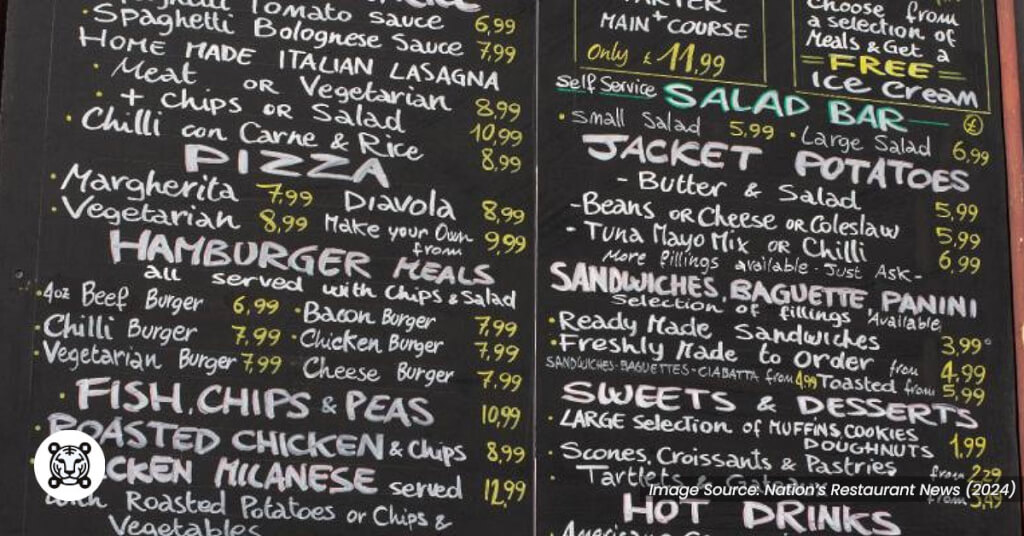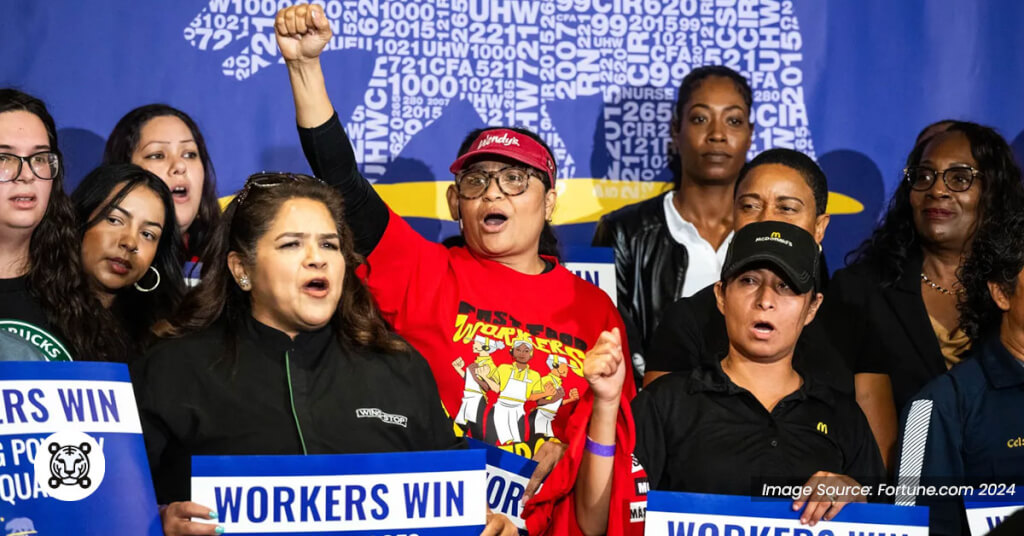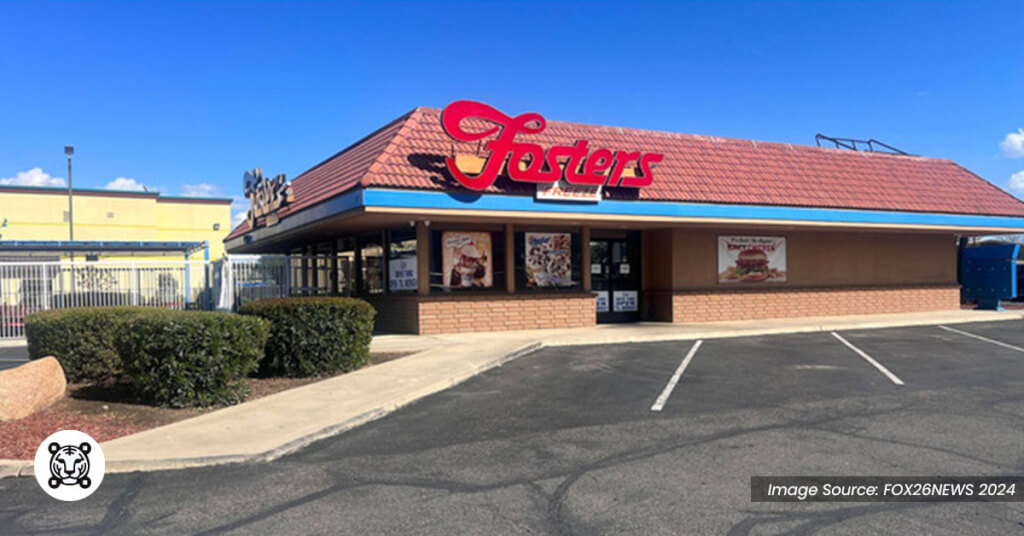
$20 California Minimum Wage Increase Impacts Industries
Last Updated: October 9, 2025
Fast price hike for fast food chains. And there's very little the industry can do about it.
The California minimum wage increase sent shockwaves to the fast food industry upon its implementation on April 1st.
The legislative background of this wage increase, dubbed “the FAST Act,” included pro-employee provisions which jumped to AB 1228—a new legislation that creates new standards for National Fast-Food Chain Restaurants, indicating a significant rise in wages per hour from the previous $16 to $20 among fast food chains.
The coverage of this mandate is those who work at restaurants with over 60 limited-service branches nationwide that share common branding, marketing, packaging, products, and services.
This is favorable to employees as higher paychecks mean keeping up with the cost of living in the state
On the other hand, employers from the food industry sector may face financial hurdles in how they are going to compensate their employees without compromising revenue.
This could cause reduced operating hours, layoffs, or even shifting to using technology for automation like QR code menus, kiosks, and other tools to cover higher labor expenses.
So, what is the law’s impact on the employees? How about the consumers and the state’s economy?
What the employers think about the California minimum wage increase

Price hike
Higher pay for restaurant workers due to minimum wage hikes is great, but it can also squeeze employers who already run on a tight budget.
To make up the difference, some places might have to bump up menu prices.
One of the few is Jack in the Box (JACK). They’re looking at raising prices by 6% to 8%, but this is a tricky move. If prices go up too much, people might just eat out less often.
Less business means less money coming in, which makes it even harder to afford to pay for workers.
Business closure
Some business owners may find themselves unable to sustain their business financially.
This could result in permanent business closure, which can pose a financial threat to businesses, including the loss of their investment and potential incapacity to provide employees back pay and benefits.
A similar situation happened to Mod Pizza when it shut down five of its restaurants in California and 27 other branches nationwide a few days after the new wage law took effect.
Re-strategized customer retention strategies
The direct impact of this new wage mandate is a price hike, which opts business owners to re-strategize customer retention efforts.
It often requires them to invest in technology, training, marketing, and value-added services, but while focusing on retaining existing customers in these ways, expect these may pose challenges for you.
Mainly because it adds to other sections of your expenses, leading to higher restaurant menu pricing for your items.
Aside from that, you may need to enhance operational efficiency to offset the impact of minimum wage increases on the bottom line.
This may include streamlining processes or optimizing staffing levels to improve productivity.
However, balancing the need for efficiency in delivering high-quality customer services is essential to ensure customer satisfaction, and you may need to set additional pay for those employees retained.
Smart employee management
Many restaurants have to strategize to mitigate the impacts of this wage increase. Others focused on optimizing staffing levels, scheduling, and task allocation.
California 1st District Congressman Doug LaMalfa has shared that a number of family-run businesses have cut down other employees working hours.
Moreover, Shanan Derian, owner of Lee’s Hoagie House in Pasadena, informed TV station KABC that he is adjusting his business operations due to the 25% increase in the minimum wage.
He mentioned that he is now reducing the operating hours and personally dedicating more time to work on himself to manage the financial implications of the wage hike.
Potential use of AI and kiosks
Businesses now see the opportunity to leverage Artificial Intelligence (AI) tools like this and kiosks to streamline operations and mitigate the rising labor costs.
Restaurant Technology News reported that despite having an argument on how increased labor costs can lead to the substitution of workers with technology food ordering software and kiosks, industry experts contend that restaurant automation is already progressing significantly, independent of wage hikes.
“I think AI, in the more long-term, maybe by later next year, will be at drive-thrus…and you won’t know if you’re talking to a person or a robot,” El Pollo Loco franchisee Michaela Mendelsohn told NBCLA news on April 2.
This indicates that restaurants may have to shift to full-blown automation to respond to higher labor expenses.
Impacts of California minimum wage increase on employees

Reduced shift work
With the $4 increase in wages per hour from the previous $16, a reduction in shift work can be applied to control the costs.
This move has mixed effects on the employees. While others would appreciate a fixed schedule or fewer overnight shifts, some may have difficulty maintaining a full-time income to make ends meet.
This is because even if a minimum wage hike is favorable for the workers, they would still be facing financial struggles if employers would opt to reduce their working hours.
Layoffs
Reducing the workforce through layoffs is one of the most direct impacts of having increased wages required.
For those franchise restaurants operating on thin profit margins, the increased wage expenses can strain their budget, and they may find it challenging to absorb the higher labor costs.
Having this countermeasure to maintain profitability, the number of unemployed individuals is expected to rise.
Having this countermeasure to maintain profitability, the number of unemployed individuals is expected to rise.
In fact, two franchisees of Pizza Hut across various locations in the state have laid off about 1,200 delivery drivers to scrap their delivery service to rely a third-party delivery instead just to pay in-store employees.
This impact has a huge effect on the restaurant employment statistics among fast food chains considering that there has already been an increase of 5.3% in the unemployment rate as of February 2024, the California Employment Development Department reported.
Heavier workload
Affected establishments might respond by redistributing the workload among the remaining staff after cutting the number of employees.
This leads to a heavier workload for the crew as they are expected to take on additional responsibilities or work long hours to compensate for being short-staffed.
With fewer employees available to handle tasks, existing staff may find themselves stretched thin, resulting in increased pressure to meet deadlines and maintain productivity levels.
Difficulty in keeping up with the state’s cost of living
According to the Bureau of Economic Analysis in 2021, the annual average cost of living in California amounts to $53,082.
Now, this means that it would cost around $4,500 per month to decently live in this state.
Having a $20 per-hour rate is fairly enough for individuals to allocate their monthly living budget.
But what will happen if businesses resort to laying off their employees due to this increased minimum rate?
It’s a sobering reality that many would find it difficult to make ends meet in this state, considering the challenge of landing another job in the same industry because restaurants must use the same strategy to cover high labor costs.
How the increased minimum wage affects California fast food businesses
Foster Freeze branch shutdown

The employees of Foster Freeze Lemoore branch thought it was an April Fool’s joke when they clocked in to work on Monday, only to be notified that the store is closing down.
After over 30 years of operation, the milkshake-famous fast-food chain closed its doors to the public. The business owner informed then assistant manager Monica Navarro that he could not afford the mandated wage increase, hence the closure.
After handling the final paycheck for his employees, a text from the owner released by FOX26NEWS quotes, “…Small businesses can't survive a 120% plus minimum wage increase over the last 10 years. We are all more broke than we were 10 years ago it's clear raising the minimum wage isn't helping…”
While it may be beneficial for employees, it could drastically scratch the business’s pockets as high labor costs can reduce profits, especially for small business owners who are less likely than large employers to pass added expenses to their customers.
Burger King price hike
Who would have thought that the crowd’s favorite Texas Double Whopper, which only cost $15.03 on March 29, would cost $1.80 more just two days later?
Their Big Fish Meal also jumped to $11.49 from its previous price of $7.49. Not only that but most of the chain’s food items increased from 25 cents to a dollar.
This menu price hike takes a heavy toll on the consumers’ side, potentially decreasing the number of sales achieved from the previous operations.
In-N-Out menu price increase
Surprisingly, the price increase of In-IN-Out was mostly just 25 cents.
Here is a comparative pricing illustration shared by the New York Post before and after the mandated minimum wage increase in California:
| Menu Item | Menu price before wage increase | Menu Price after wage increase |
| Double-Double Burger | $5.65 | $5.90 |
| Cheeseburger | $3.95 | $4.10 |
| Hamburger | $3. 50 | $3.60 |
| French fries | $2.30 | $2.30 |
| Shakes | $2.95 | $3.00 |
Some patrons expressed that it is such a nominal increase and seems reasonable for consumers.
However, not everyone would agree. A sudden price change can affect the sales per day acquired by not giving ample time for other diners to process this price increase.
Hart House upped some menu items
Meanwhile, Kevin Hart’s founded fast food restaurant, Hart House, has gone up with its milkshake prices by $1.
Additional products, such as large fries, increased to $5.99 from its original price point of $4.49.
Chipotle to impose mid-single-digit price increase
With the new wage law, many restaurants and fast food chains have taken action by raising a 7 to 8 percent increase to their selected menus.
One of those is Chipotle. The research study conducted by analyst Mark Kalinowski (with a sample of 25 Chipotle restaurants in California, revealed that their chicken burrito went up by 8.3% from February to April while the cost of a steak burrito increased by 7%.
This increase could not possibly affect the restaurant because they are in a unique position where they can offset the labor costs, analyst Eric Gonzales emphasized.
This is because the company, before the wage increase, undervalued its menu prices in spite of serving quality products to compete with other burrito options in the state.
Aside from that, Chipotle’s high traffic gained pricing power among their products. The company’s fourth-quarter sales in 2023 have reached 8.4% in same-store, with a revenue of $2.5 billion.
One McDonald's franchise plans on menu price hike
With 18 franchises in Northern California, Scot Rodrick has been forced to raise menu prices in response to the salary increase but resisted the price surge on Happy Meals.
“I certainly can’t charge $20 for a Happy Meal,” Rodrick stated. As many customers love this specific menu item, this franchisee wants to retain its price due to its demand.
Apparently, three months before the law took effect, this particular franchise had already raised their other items about 7% to 8%.
Following through with the new minimum wage law, he plans to add to their current menu prices.
Pizza Hut layoff delivery drivers
In the federal employment notices reviewed by Business Insider, two Pizza Hut operators in California have been eliminating their in-house delivery services at their hundreds of stores, which resulted in more than 1,200 driver lay-offs.
It affected delivery drivers from Sacramento, Palm Springs, and Los Angeles locations in response to the new law passed.
The customers then had to rely on third-party delivery apps, which would add up to the total cost of their orders.
Implication to California’s economy
California’s fast-food businesses are getting ready for significant changes, including increased employee compensation and reconstructed business dynamics.
Now, with workers set to receive a salary boost and businesses confronting elevated labor expenses, potential economic implications take center stage.
To give us a heads-up, here is a list of impacts provided by the Society for Human Resource Management:
- Fast-service restaurants' higher labor expenses can lead them to transfer these costs to consumers through higher prices. Sudden changes in restaurant menu pricing can potentially hit products’ sales and revenue.
- About 500,000 workers will benefit from the law, according to the Service Employees International Union (SEIU).
- According to Alan Gin, an Economist from the University of San Diego, although the law targeted the fast food industry in the state, it will surely affect other businesses.
This means other people from other food industry categories can indirectly receive pay raises to retain their employees.
Michael Reich, an economics professor and chair of the Center on Wage and Employment Dynamics, cited an example of full-service restaurants not covered by the $20 wage law. The staff might demand a pay increase, saying they’ll quit otherwise.
- This $20 minimum wage could have various repercussions, according to the International Franchise Association (IFA).
One of those are store closures, he added. A business that owns underperforming restaurants may decide to close them due to higher labor expenses.
Economist Christopher Thornberg of Beacon Economics emphasized that the wage increase will reduce the fast-food industry growth as less expansion on most chain restaurants and the workforce is expected.
- Fox40 Local News indicated in their report that the newly-formed Fast Food Council under the Department of Industrial Relations will have the option to annually raise the minimum wage in California by 2025, either 3.5 or the inflation rate measured by the US Consumer Price Index, whichever is lower.
MENU TIGER: How to save your business from sudden industry changes using this QR code menu technology

The worst thing that could happen in a business is when you suddenly decide to close it down because you can’t keep up with the industry’s changing regulations.
But should you? Is there anything you can do to countermeasure these changes?
Absolutely. QR code menu technology is seemingly at the frontline as one of many choices for reducing expenses by a huge amount.
In fact, Jeff Hanscom—vice president of state and local government relations at the IFA, has expressed the possibility of having more automation as one of the implications of California’s new wage law.
Now, how can this technology be of help to you?
Integrate this QR code menu technology into restaurant operations
Having a food menu QR code not only streamlines your overall operations but also cuts down your operating expenses, such as menu printing, advertising, and even labor costing.
Your customers will no longer have to wait in line at your counters or be accommodated by your staff to complete their order transactions.
They just have to scan these QR codes through their smartphones for a touch-free and seamless dining experience.
Pro tip: To avoid delays or errors, make sure to put instructions on how to scan a menu QR code for those customers who are not familiar with this.
Go for digital marketing through emails
Speaking of marketing and advertising, MENU TIGER provides you with a vast opportunity for a more personalized marketing strategy at a very minimal cost, targeting your desired customers.
You can send out a restaurant newsletter containing your promo deals, special discounts, and menu updates, so you don’t have to spend on printing posters or hiring an advertising company to do that.
Restructure your risk management plan with QR code menu software
The California minimum wage increase takes everyone aback, and it has been a burden to carry for all business owners.
Some of you plan to lessen your expenses by reallocating your budget to compensate your employees, or the last resort is to let your hard-earned business go.
But hold on. It should not have to end that way.
We’ve seen how technology like MENU TIGER’s QR code menu software has contributed to providing efficient and simplified workflow at a minimal cost before this wage increase fiasco.
With that alone, it guarantees assistance in restructuring your plans for business, leading to saving it from a possible shutdown.
It just takes a minute to make an account.
Visit the website and sign up for future-proof overall restaurant services.
FAQs
Chevy
Before joining MENU TIGER's Content Team, Chevy has been dabbling in literary arts for five years, specifically creative writing in a theatre company. She loves exploring her creativity through painting, photography, and contemporary dancing.


